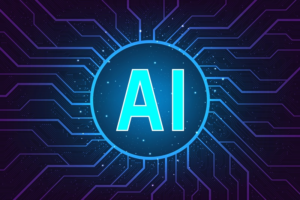Artificial intelligence (AI) is revolutionizing many processes across industries and applications—digital customer service assistants, autonomous vehicles, robots in retail warehouses. AI can even write a news article start to finish. There’s certainly no lack of hype around the technology, and its application in business settings from a practical sense is nothing short of life-changing. However, AI comes with its drawbacks.
It’s not a silver bullet for every business qualm, despite what some hype men may promise. The key to harnessing the full potential of AI—and its subfields of machine learning and deep learning—is to understand its limits. Recognizing where AI works and where it does not is a skill many business leaders have yet to master.
Today’s AI is Weak
So far, AI applications can only perform the tasks for which they were specifically developed. In other words, the AI we know today is weak. It can’t answer every question, it can’t behave flexibly, and it certainly can’t think or comprehend for itself (yet). So, take the promises of an AI-holy grail with a grain of salt. AI is no more than a tool.
Critical Questions About AI
To discern where AI can improve business processes and where it cannot, it’s important to take into account its legal and ethical considerations, its biases and its transparency. Asking critical questions about certain AI applications is critical to setting a project up for success and avoiding risk down the line.
From a legal perspective, we must decipher who carries responsibility for a bad judgment call (i.e. a self-driving car hits a pedestrian). We also must recognize that there is bias when working with cognitive-based technology. AI learns from the data it gets; however, it doesn’t have the means to question this data, which means that data sets can easily skew in one direction and leave AI to adopt bias.
This can lead to things like discrimination in recruiting processes or racial bias in healthcare management. Businesses that work with AI will also find themselves walking a fine line between trust and transparency. While the intention of advanced AI is to make more independent decisions over time, engineers can run into a “black box” scenario where it’s unclear how the application came to its decision.
The Best Fit for AI in Business Processes
If AI is a hammer, not every business process is a nail. One important distinction to make when determining if AI can apply to a certain business process is complexity. It’s a Goldilocks scenario of too hot, too cold and just right. Businesses must gauge the effectiveness of AI-based tools based on the level of cognitive intervention that is appropriate for a given application.
AI is designed to be used for complex problems, even replicating some aspects of what we know about human intelligence. However, when it comes to inferring its own decision-making criteria—that is, putting it all together and filling the gaps—AI falls short. On the other end of the spectrum, simple problems that encompass a predefined set of rules might be better left to basic programs that don’t have a cognitive component. After all, AI is regarded as most effective in situations where decisions cannot be made based on simple if-then rules.
To illustrate how some applications of AI make more sense than others, consider the process of corporate invoicing. The task of determining invoice types, like whether a document is an FI or MM invoice (for SAP customers), can be broken down into a single yes/no question (i.e. is there an order number on the invoice?). Because the task is set by predefined rules that don’t change, there would be no point in deploying AI.
On the other hand, tasks such as document capture that scan the content of incoming invoices are often too complex to make good use of AI technology. Since most countries require invoices to follow different legal specifications, there are no rules on how invoices must look. As a result, they come with an almost infinite range of layouts. While it would be far too complex to manually train the system with all the different layouts, it’s a perfect scenario for applying AI. By learning from the image and storing a unique code describing the document in a binary language, AI creates a unique fingerprint that can help determine who sends the invoice or who usually approves the document. .
In the spirit of meeting in the middle, an ideal task for AI would be something like account assignments. Specifying all rules for account assignment in advance can be extremely laborious — in fact, it might even be impossible to incorporate all conceivable scenarios. This is where a list of suggestions generated by the prediction service is useful. This list can be based on AI, or it can simply show previous account assignments. Recurring elements such as G/L accounts or cost centers are better suited to automation than one-off or temporary objects such as SD orders and projects. In this case, the use of AI would be beneficial.
In order for business leaders to unlock the potential of AI-based tools, they must first comprehend the technology’s limitations. Yes, it can be useful for simplifying and automating workflows, but it’s not a one-size-fits-all silver bullet. If a business is considering using AI to automate processes, it should first examine what information is needed, and from what systems. This will help them to determine if they should apply AI tools or stick to basic if-then rules or human instruction. Understanding this will allow AI to become an incredibly useful tool for simplifying and automating workflows, giving businesses the potential to take automation of document-based processes to the next level.
About the author: Danny Schaarmann is the CEO and president of xSuite Solutions, a Boston-based SAP consultancy. Previously, Schaarmann co-founded TIM Solutions in 2008, Matonu in 2014, and ILC Technologies in 2015, acting as CEO across all of his business properties.
Related Items:
Understanding the Limits of AI
5 Things AI Is Better At Than You
The post Understanding AI’s Limitations Is Key to Unlocking Its Potential appeared first on Datanami.



0 Commentaires